36 streets Hanoi is an ancient city from the Ly and Tran dynasties; since the early years of the 11th century, this has been a bustling trading center. The traditional occupation was named for the streets, creating very specific names that, just hearing them, immediately made people think of 36 streets Hanoi.
36 streets Hanoi is an attractive destination for domestic and foreign tourists. Metta Voyage shares information about discovering Hanoi’s culture in the 36 streets Hanoi!
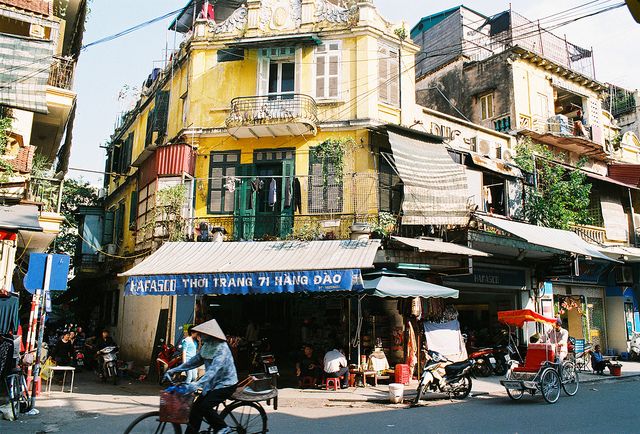
1. Introduction of 36 Streets Hanoi
1.1. Overview
According to records, King Le Hien Tong divided Thang Long citadel into 36 areas, known as 36 streets Hanoi, which belonged to the two districts of Vinh Xuong and Quang Duc in 174. This may be a trading town because of the occupation characteristics of the region.
The 36 streets Hanoi are the old urban areas located inside and outside the Hanoi Old Quarter. The most characteristic of the Old Quarter is the craft village streets, and the old houses imbued with traditional Vietnamese architecture.
In the past, artisans from all over the craft villages around Thang Long citadel gathered here to trade; they divided by area and focused on selling the main products of their craft villages. And the streets here are named after the main products sold there, plus the word “Hang” in front.
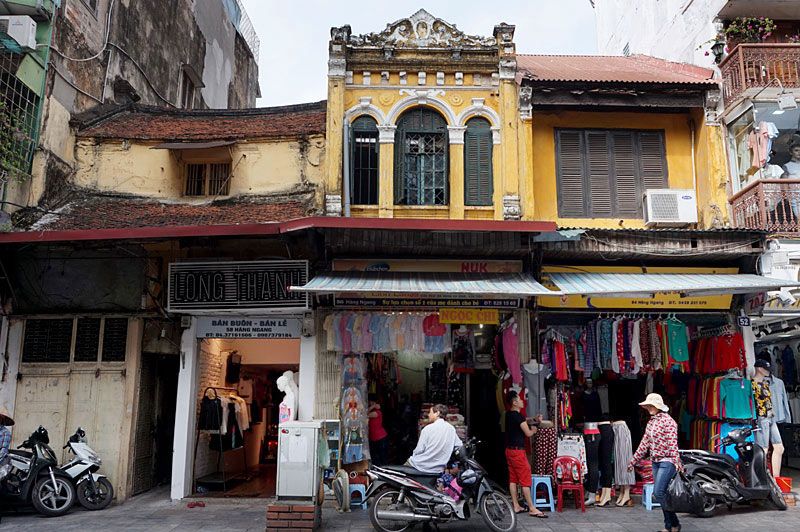
1.2. 36 Streets Hanoi Map
The Old Quarter area is mainly concentrated in the North and West of Hoan Kiem District. If you want to come here, you can go to Hoan Kiem Lake and walk along the sidewalk to the Old Quarter. Or go to another starting point, like Dong Xuan Market or O Quan Chuong.
According to the Ministry of Construction, the Hanoi Old Quarter has a defined scope: Hang Dau Street to the North; Phung Hung Street to the west; in the south, the streets of Hang Bong, Hang Gai, Cau Go, and Hang Thung; east of Tran Quang Khai Street and Tran Nhat Duat Street.
Hanoi Old Quarter is located in Hoan Kiem district with a total area of about 100 hectares and 76 streets belonging to 10 wards: Hang Dao, Hang Bac, Hang Buom, Hang Bo, Hang Bong, Hang Gai, Hang Ma, and Dong Xuan wards; Cua Dong; and Ly Thai To.
Although the old streets of Hanoi are also located outside this area in other districts such as Ba Dinh, Dong Da, and Hai Ba Trung, however, the old town is located here and has retained its characteristics; it is the only region that has been conserved.
2. Distinctive features of 36 Streets Hanoi
2.1. Architecture
Architecture is another feature that makes the old town unique, with its tube house structure, slanted tile roofs, and facades of shops specializing in business and trade, built mainly in the old days 18th and 19th centuries. The houses are small at first glance, but they are arranged very cleverly and reasonably by the residents, still fully serving their needs.
2.2. Culture
Going back to the old town is going back to the tradition of a thousand years of civilization, with cultural values still preserved in about 100 long-standing architectural works, including communal houses, temples, pagodas, and assembly halls, which are the most typical. Bach Ma temple is on Hang Buom street, one of the four towns of the ancient Thang Long citadel.
2.3. Cuisine
Hanoi’s Old Quarter is beautiful, with small shops along the way. Although it is not a luxury restaurant, the taste is strong enough to hold travelers back. Old town cuisine includes traditional dishes such as Bun Cha, Pho, fish vermicelli, etc., in small roadside shops or old houses with dozens of houses five years old.
3. The Most Famous Streets of 36 Streets Hanoi
3.1. Hang Bac Street
Hang Bac Street is one of 36 streets Hanoi and is well-known all over the province. This street specializes in the jewelry industry, with various jewelry styles that will impress all beauty lovers.
In the past, Hang Bac Street had three different professions: silver casting, goldsmithing, and money changing. These professions come from three famous gold and silver craft villages in Northern Vietnam: Chau Khe village (Hung Yen province), Dong Xam village (Thai Binh province), and Dinh Cong village.
Today, jewelry making and gold and silver exchange are concentrated on Hang Bac Street, but many other places also have wholesale shops selling gold and silver. But the leading position in jewelry making is still held by jewelers on Hang Bac Street.

3.2. Hang Tre Street
Hang Tre Street (former names: Hang Cau- the first part of the street and Rue des Bamboes – the French colonial period) is a street in Hanoi’s Old Quarter, Ly Thai To ward, Hoan Kiem district, Hanoi.
The street is named Hang Tre because, in the past, this street was right next to the Red River, convenient for picking bamboo, so there were “stalls” selling bamboo there. It is a densely populated area with spacious new townhouses and many old houses and dormitories located close together. The streets are open and planted with many trees.
The street thrives in the food and beverage business. Spreading along the street are many famous restaurants, delicious eateries with spacious spaces, and diverse menus, from popular to high-class, attracting a lot of diners to eat and drink. In addition, on the street, there are monumental French colonial architectural works by many companies and central agencies.

Hang Tre Street is the street that used to have the first courthouse in Hanoi. Today, Hang Tre Court becomes the headquarters of two agencies: the Vietnam Mekong River Commission and the Central Management Board of irrigation projects.
3.3. Cau Go Street
Cau Go Street is a 250-meter-long street located in Hoan Kiem district, Hanoi city. This is a one-way street, starting from the beginning of Hang Gai, cutting through Hang Dao, Dinh Liet, Hoan Kiem Lake, Hang Dau, Hang Be, passing Nguyen Huu Huan, and then Hang Thung street. The street is in Hang Bac ward, Hoan Kiem district.
The street is in the old quarter of Hanoi, with many old houses and shops close to the roadside. The street is named Cau Go because it has a bridge over a small creek connecting the two lakes Tai Chi (also known as Hang Dao lake, which the French filled to build houses) and Hoan Kiem.
Cau Go Street is full of delicious dishes you cannot miss when traveling to Hanoi, such as Cau Go cake, Pho beef, Bun Fake Ba Ba, Xoi Ba Son Cau Go, seafood, Bun Thang Cau Wood, etc.
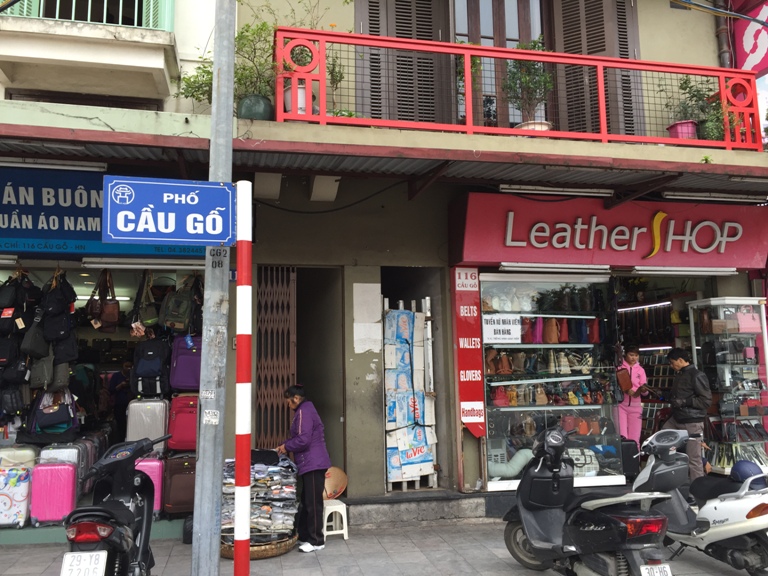
3.4. Hang Dao Street
Hang Dao Street in Hanoi is located in the north-south direction and is nearly 300 m long. The street’s southern end is Dong Kinh Nghia Thuc Square near Hoan Kiem Lake; the north end borders Hang Ngang Street. Hang Dao Street dates back to before the French colonial period; the French called it “Rue de la Soie” (Silk Road), a play on words. In 1945, the name was changed to Hang Dao Street, which it is now.
Hang Dao is still considered the main street of Hanoi. Hang Dao Street is where silk is sold in many beautiful colors, and the Hang Dao people are still known as elegant people, people of “period” style in the flashy city.

3.5. Dong Xuan Street / Market Street
Dong Xuan street is about one hundred and seventy meters long, following Hang Giay street at the Hang Khoai intersection, cutting through Hang Chieu and Hang Ma intersections, passing Gach alley to Hang Duong street, facing Hoan Kiem lake, in Dong Xuan ward, Hoan Kiem District. The name Dong Xuan Street appeared after 1945.
Located on Dong Xuan Street, Dong Xuan Market is mentioned as one of the busiest trading markets in the North. Dong Xuan Market is a cultural symbol representing the long history of the ancient land of Ha Noi. To Hanoi, visitors should take a walk around the market to enjoy the crowded and bustling atmosphere from the stalls and enjoy the attractive dishes with the bold flavors of the old Hanoians.
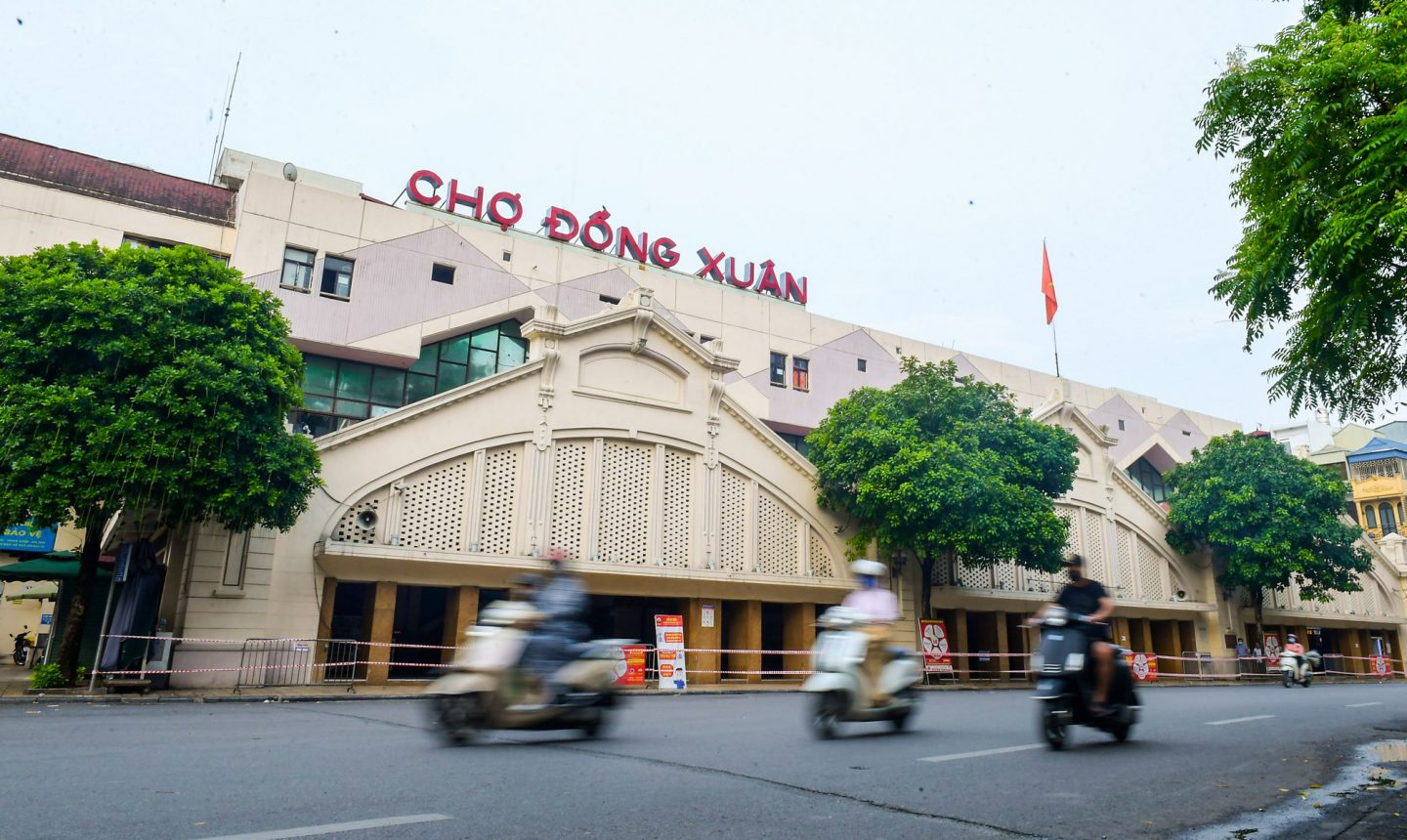
3.6. Hang Mam Street
Hang Mam is a small street in the Ly Thai To ward of the Hoan Kiem district. The street is called Hang Mam because it used to sell a variety of fish sauces and seafood. The street is approximately 190 meters long and runs mostly east-west, linking Tran Quang Khai street to Hang Bac street, passing the intersections of Hang Tre Street, Nguyen Huu Huan Street, and Hang Be Street. Several houses were afterward refurbished and their facades transformed into shops. Hang Mam Street no longer sells fish sauce, but now trades in tombstones, pottery, earthenware, groceries, and food.
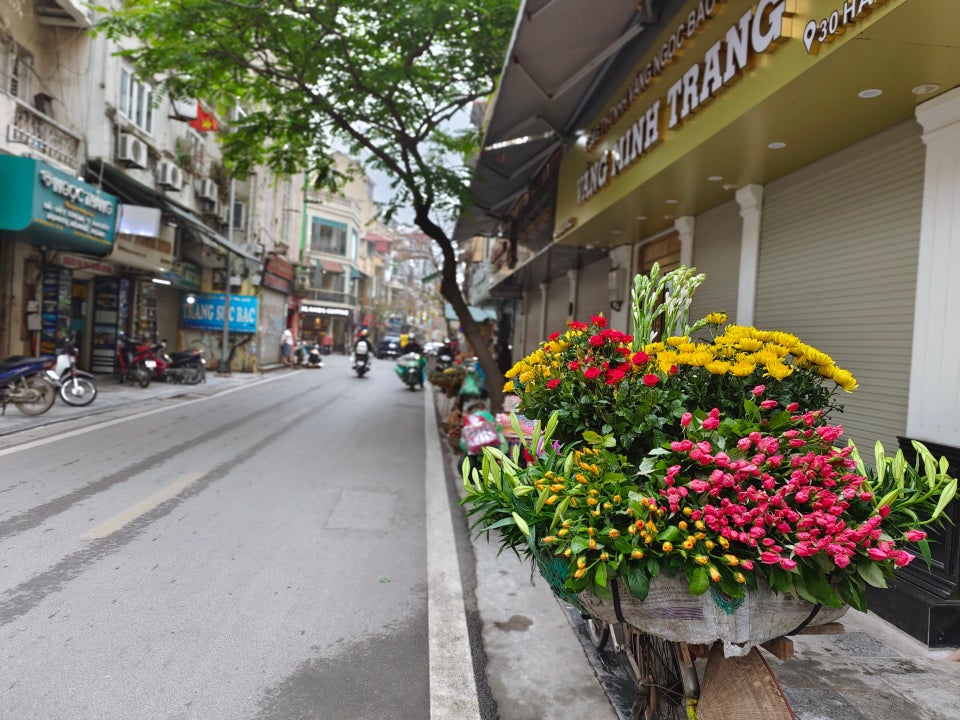
3.7. Ma May Street
As a famous street in Hanoi’s Old Quarter, Ma May Street is a destination that attracts many tourists, especially foreign tourists. Ma May Street cuts two streets: Hang Bac and Hang Buom. This name, Ma May, combines two street names: Hang Ma (south section) and Hang May (north section).
In the past, the southern section of Ma May Street specialized in selling paper goods and worshiping items such as gold coins, paper horses, paper clothes, etc. The northern part of the street specializes in making items from rattan and yarn.
However, most of the neighborhood has now turned to businesses and services, including motels, hotels, and restaurants, to serve tourists. It would be best to enjoy delicious dishes on Ma May Street: grilled beef stew, melon fried rice, and chicken noodle soup.
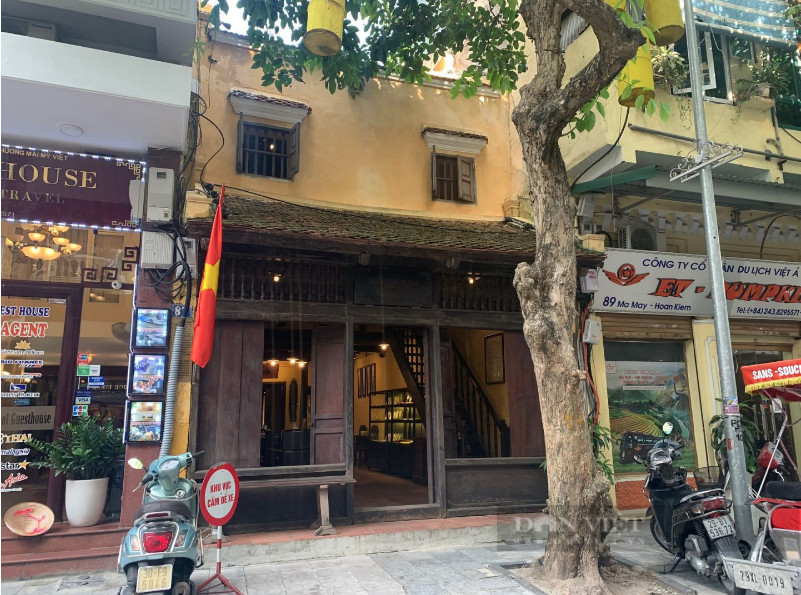
In the above article, Metta Voyage shares useful information for those who want to discover Hanoi culture in the 36 streets Hanoi. It can be said that “36 Streets Hanoi” is an interesting destination for visitors who want to learn more about the ancient culture of the Hanoi people. You can reach us by phone at (+84) 812 247 572 or by visiting our website.
Contact us
Website: www.mettavoyage.com
Email: info@mettavoyage.com
Hotline 24/7: (+84) 812 247 572

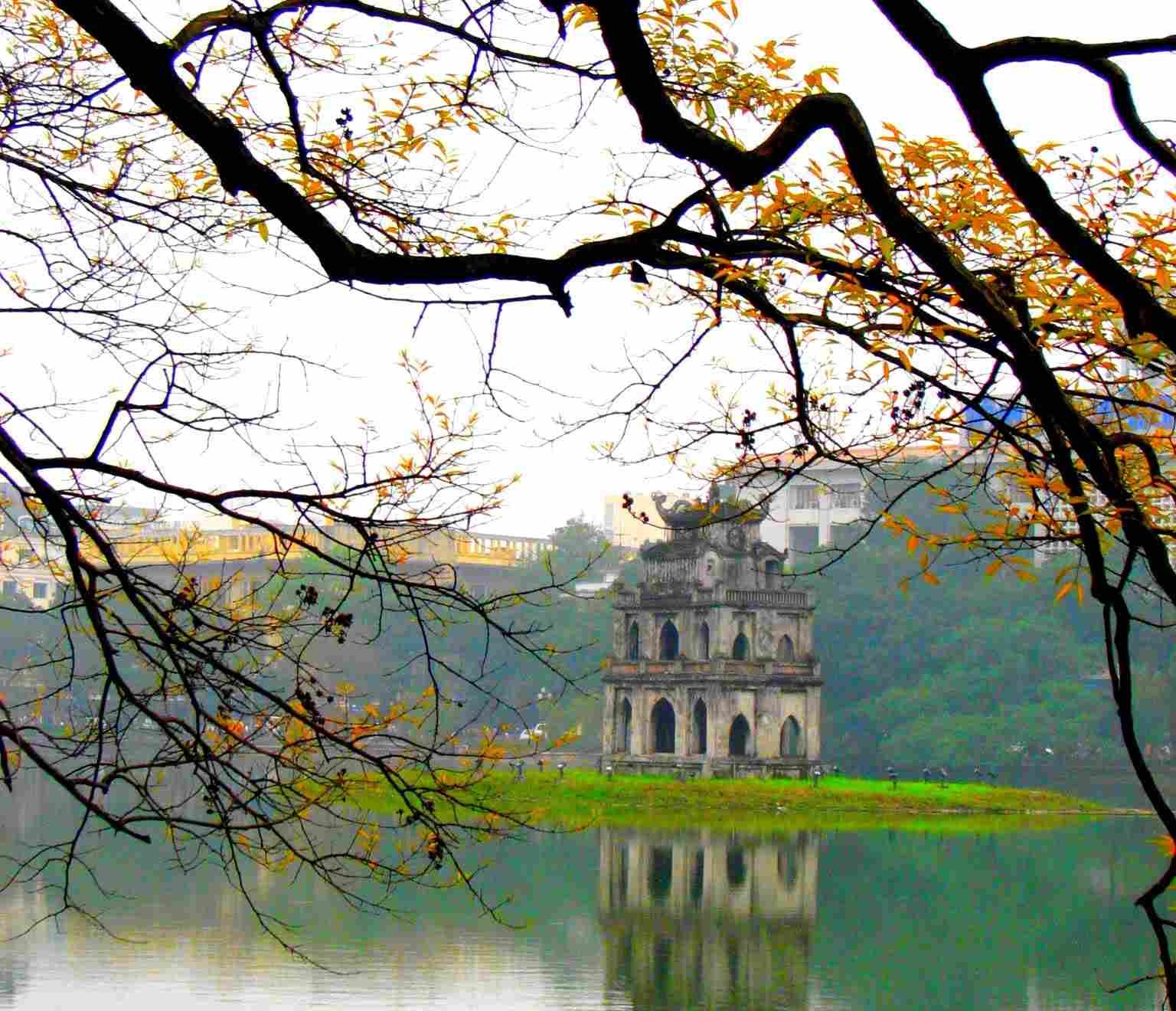

0 Comment